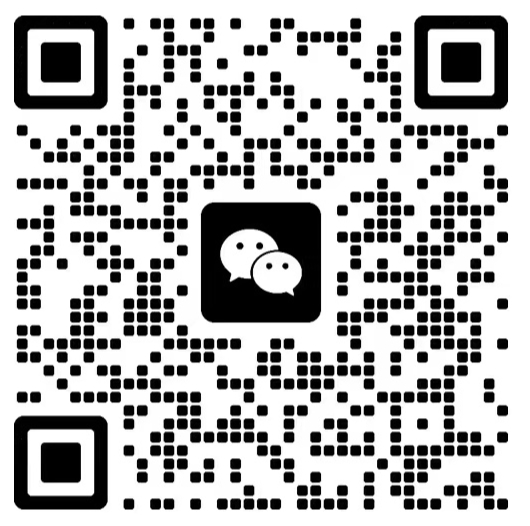西游记角色英文怎么说,红孩儿英文配音
西游记角色英文怎么说,红孩儿英文配音,老铁们想知道有关这个问题的分析和解答吗,相信你通过以下的文章内容就会有更深入的了解,那么接下来就跟着我们的小编一起看看吧。
The English Names of Characters in Journey to the West and Red Boy's English Dubbing

Introduction
Journey to the West, written by Wu Cheng'en, is one of the Four Great Classical Novels of Chinese literature. Its rich characters and gripping storyline have made it a timeless masterpiece. Among the dynamic cast, Red Boy, an important figure in the novel, has gained significant popularity. In this article, we will explore the English names of the characters in Journey to the West and delve into the topic of the English dubbing for Red Boy.
1. Chinese Mythology Meets English Adaptation
As Chinese literature continues to captivate global audiences, it becomes essential to find suitable English translations for the characters in Journey to the West. Adapting the story to an international audience poses a unique challenge due to cultural nuances. However, with careful consideration, the English names of characters have been crafted to retain their essence while being relatable to non-Chinese readers.
2. Sun Wukong: The Monkey King
The central character of Journey to the West is Sun Wukong, commonly known as the Monkey King. His English name reflects the original character's traits and title, emphasizing his mischievous nature and his position as the king of monkeys. The choice of "Monkey King" effectively conveys the essence of the character and is widely recognized by English-speaking audiences.
3. Zhu Bajie: The Pigsy
Another remarkable character in the novel is Zhu Bajie, a half-human and half-pig creature. In English, he is often referred to as "Pigsy," which captures his swine-like appearance while retaining the spirit of his original name. This imaginative character adds humor and mischief to the story, making him a beloved figure for readers of all ages.
4. Sha Wujing: Sandy
Sha Wujing, also known as Sandy, is a Buddhist monk accompanying the main characters on their journey. The English name reflects his role as a devoted and loyal disciple. The simplicity of his name allows English-speaking readers to easily identify and connect with this pious character.
5. Red Boy: The Fiery Youngster
Among the many intriguing characters in Journey to the West, Red Boy stands out as a memorable figure. His fiery temperament and distinctive appearance have drawn attention to the English dubbing for this character. To maintain the authenticity of the novel while appealing to an English-speaking audience, the English dubbing for Red Boy should emphasize his fiery nature, perhaps by using a dynamic voice actor who can bring his personality to life.
Conclusion
As the popularity of Journey to the West continues to grow globally, it becomes necessary to find appropriate English translations for the original character names. The use of well-crafted English names preserves the essence of the characters while catering to an international audience. Moreover, the English dubbing for iconic characters like Red Boy adds another layer of depth and intrigue to the overall storytelling. By embracing these adaptations, the enchanting world of Journey to the West is made accessible to readers and viewers around the world.
西游记角色英文怎么说

西游记角色英文怎么说
Part 1: Introduction
The Journey to the West, also known as Monkey, is a Chinese classic novel that has captured the hearts of readers for centuries. This article explores how the main characters from this epic adventure are referred to in English. From the fearless Monkey King to the mischievous Pigsy, let's dive into the English translations of these iconic figures.
Part 2: The Monkey King
Sun Wukong, the Monkey King, is undoubtedly the most renowned character from the novel. Known for his incredible strength and supernatural powers, he is often referred to as the Great Sage Equal to Heaven in English translations. This name perfectly captures his god-like abilities and his role as a formidable adversary to heaven.
Part 3: Tang Sanzang
Tang Sanzang, also known as Tripitaka in English, is the monk who embarks on the journey to the west to retrieve the sacred Buddhist scriptures. Translated as "Three Baskets," Tripitaka highlights the importance of the sutras in Buddhist teachings. As the leader of the group, Tripitaka's determination and devotion to his mission make him a central character in the story.
Part 4: Zhu Bajie
Zhu Bajie, often called Pigsy in English, is a half-man, half-pig creature who joins Tang Sanzang's group. Pigsy is known for his gluttonous nature and his fondness for mischief. The translation of his name reflects his appearance and his lack of human qualities, making him a humorous and lovable character in the novel.
Part 5: Sha Wujing
Sha Wujing, the third disciple, is a former celestial general who was cast out of heaven due to his clumsiness. In English, he is often referred to as Sandy, which does not capture the essence of his original name entirely. However, this name represents his calm and composed personality, as well as his role as a devoted protector of Tang Sanzang.
Part 6: The White Dragon Horse
The White Dragon Horse, known as Bai Long Ma in Chinese, is a magical creature who acts as Tang Sanzang's loyal steed. In English translations, he is commonly referred to as the White Dragon Horse or the White Horse. This name preserves the mythical and majestic qualities of this extraordinary creature.
Part 7: Other Supporting Characters
Aside from the main characters, there are numerous supporting characters in the Journey to the West. For instance, the Dragon King of the East Sea, Ao Guang, is a significant character who aids the protagonists throughout their journey. His name remains unchanged in English translations, emphasizing his regal status and power.
Part 8: Cultural Significance
The names and translations of the characters in the Journey to the West hold great cultural significance. They not only reflect the characteristics and roles of the characters but also provide insights into Chinese mythology and Buddhism. These translations allow readers from different cultures to engage with and appreciate the story.
Part 9: Impact on Popular Culture
The Journey to the West and its characters have had a lasting impact on popular culture worldwide. From movies and TV adaptations to video games and comics, the characters continue to inspire and captivate audiences globally. Their English translations have played a crucial role in spreading the charm and magic of this timeless tale.
Part 10: Conclusion
In conclusion, the English translations of the characters from the Journey to the West effectively capture their essence, characteristics, and cultural significance. From the mighty Monkey King to the mischievous Pigsy, these names allow readers to connect with and appreciate these iconic characters in a global context. Whether it's through literature, adaptations, or popular culture, the characters from the Journey to the West continue to enchant and inspire audiences around the world.
白骨精用英文怎么说

The Translation of "白骨精"
Introduction:
In the realm of Chinese literature and folklore, there are many intriguing characters that have captivated readers for centuries. Among them, 白骨精 (bái gǔ jīng), often translated as the White Bone Demon, is undoubtedly one of the most memorable. This article aims to explore how the name "白骨精" is rendered in English, shedding light on the various translations used and the underlying implications they carry.
1. The White Bone Demon:
白骨精, literally meaning "white bone spirit," is a character that originated from the classical Chinese novel "Journey to the West." In this epic tale, she is portrayed as a female demon who practices dark magic and covets eternal youth. The translation "White Bone Demon" accurately captures the essence of the character, emphasizing her sinister nature and association with the occult.
2. The White Skeleton Spirit:
Another commonly used translation for 白骨精 is "White Skeleton Spirit." This rendition also conveys the essential features of the character, namely her skeletal form and supernatural origin. By using the term "spirit" instead of "demon," it adds a mystical element to the translation, evoking the aura of the character's supernatural abilities.
3. The White Skeleton Devil:
A more intense interpretation of the name is "White Skeleton Devil." This translation accentuates the malicious nature of 白骨精, emphasizing her wickedness and malevolence. The use of "devil" instead of "demon" conveys a heightened sense of evil, further underscoring the character's antagonistic role in the story.
4. The Ivory Skeleton:
In some translations, 白骨精 is referred to as the "Ivory Skeleton." This rendition adopts a different approach, focusing on the color and material of the character's bones rather than her spiritual nature. "Ivory" carries connotations of purity and elegance, which contrasts sharply with the character's evil intentions. This translation choice adds an interesting layer of complexity to the character's portrayal.
5. The Pale Boned Spirit:
A slightly more poetic translation is "Pale Boned Spirit." This rendition captures the visual aspect of the character, highlighting her pale and delicate appearance. The use of "spirit" instead of "demon" softens the overall tone, leaving room for nuanced interpretations of the character's motivations and actions.
Conclusion:
The translation of "白骨精" presents various possibilities, each with its own nuances and implications. Whether she is referred to as the White Bone Demon, White Skeleton Spirit, White Skeleton Devil, Ivory Skeleton, or Pale Boned Spirit, each translation offers a glimpse into the character's nature and role in Chinese mythology. These different renditions provide readers with a rich tapestry of interpretations, ultimately enhancing their experience and understanding of this captivating literary figure.
西游记角色英文怎么说,红孩儿英文配音的问题分享结束啦,以上的文章解决了您的问题吗?欢迎您下次再来哦!
免责声明:以上整理自互联网,与本站无关。其原创性以及文中陈述文字和内容未经本站证实,对本文以及其中全部或者部分内容、文字的真实性、完整性、及时性本站不作任何保证或承诺,请读者仅作参考,并请自行核实相关内容。(我们重在分享,尊重原创,如有侵权请联系在线客服在24小时内删除)
为您的创意找到最好的声音
平台累计配音,超40,050,000 分钟
-
品质保证15年专注网络配音行业 500+国内外专业配音员
-
多种配音中文多场景配音 提供小语种配音
-
公司化运作提供正规发票 签订服务合同
-
双重备案工信部公安双重备案 取得文化经营许可证
-
7*14全天候服务公司实现轮流值班 9:00-21:00都有客服
推荐样音
更多收到您的极速试音需求
关注【客服微信】
听最新案例,新客礼包等你拿!
提交成功
试音顾问将在工作日半小时内联系您,请准备试音文稿或参考音频加速匹配
你也可以注册,可自助下单挑选主播,在线接单配音。(7 X 24小时主播接单)











